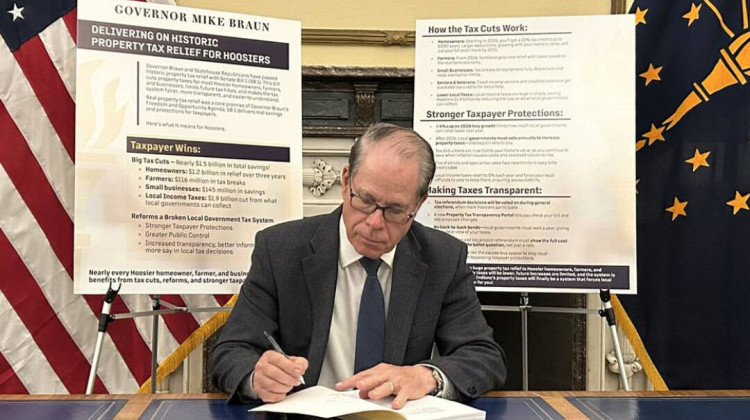New numbers from the Indiana State Supreme Court show low participation in the eviction diversion program launched in November.
Between Nov. 1 and Dec. 10, tenants and landlords were advised on eviction diversion resources in 1,475 cases as part of the new state requirement. But just 87 cases - roughly 6% - then proceeded into the state’s eviction diversion program.
Brandon Beeler is a tenant advocate with Indiana Legal Services.
“To me, the numbers say not a lot of participation. The diversion at this point we need to really look at is why people are not participating in it,” he said. “I don’t think anyone could argue that’s a high number.”
Beeler raised concerns about participation in the state’s landlord tenant settlement conference back in August. The diversion program launched in November includes some tweaks to settlement conferences, including sealing eviction cases - which keeps eviction cases from showing up on tenants' permanent records.
Andrew Bradley is the policy director for Prosperity Indiana. He said the sealing aspect of the diversion program is an important one.
“So without a way to seal or expunge the record, a tenant can have that scarlet E follow them for many years,” he said. “It can really put them into poor housing situations and leave them out literally in the cold sometimes.”
Bradley said having an eviction case on your record can lead to landlords denying a housing application down the road.
“If that eviction has been filed the tenant may not be aware that is lying in wait in their record until the next time they apply,” he said. “That’s when the scarlet E can show itself.”
Judge Bob Altice sits on the Indiana Court of Appeals and is a member of the state’s eviction task force. He said even if the program numbers aren’t high, the state has still utilized $184-million dollars in emergency rental assistance, suggesting that assistance is going out - even if it’s not in conjunction with the state diversion program.
“So while that [participation] number is small, I look at the number of households assisted and the amount of money that is being spent and I think it’s getting to the people that need it,” he said.
Altice acknowledges that if rental assistance is getting to tenants outside of the diversion program, tenants are missing out on some benefits. But he said he doesn’t expect there will be any changes to the state’s program to incentivize participation.
“I think as a task force, one of the things we are looking at now is changing what we need to look at stat-wise,” he said. “It may just bounce back down to the number of households assisted. That number is large. The monies spent are large.”
According to the state’s latest report, nearly 17,000 Hoosier households have been assisted through Indiana’s emergency rental assistance program - a number that doesn’t include the additional 10,000 households that have received aid in Marion County.
But, Beeler with Indiana Legal Services noted, leaving evictions on tenant records could create more problems down the road.
“The rental assistance getting out is great,” he said. “We all sort of agreed that low-income tenants and vulnerable tenants who suffered the most, hourly job loss, job loss totally, shouldn’t be punished for what happened during COVID-19 and get that sealing. Maybe they got it resolved, but they still will have this pending eviction case on their record that could adversely affect them from getting affordable housing in the future.”
 DONATE
DONATE







 Support WFYI. We can't do it without you.
Support WFYI. We can't do it without you.